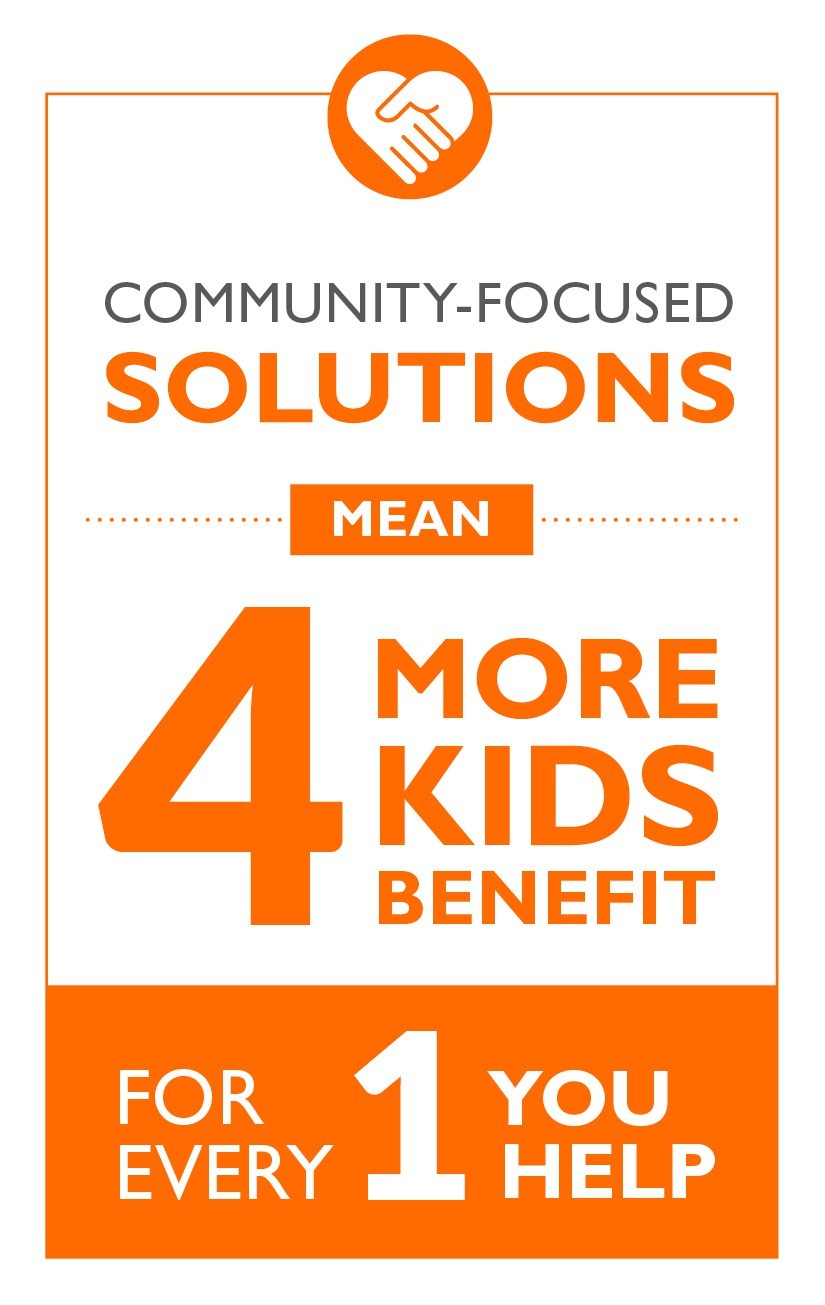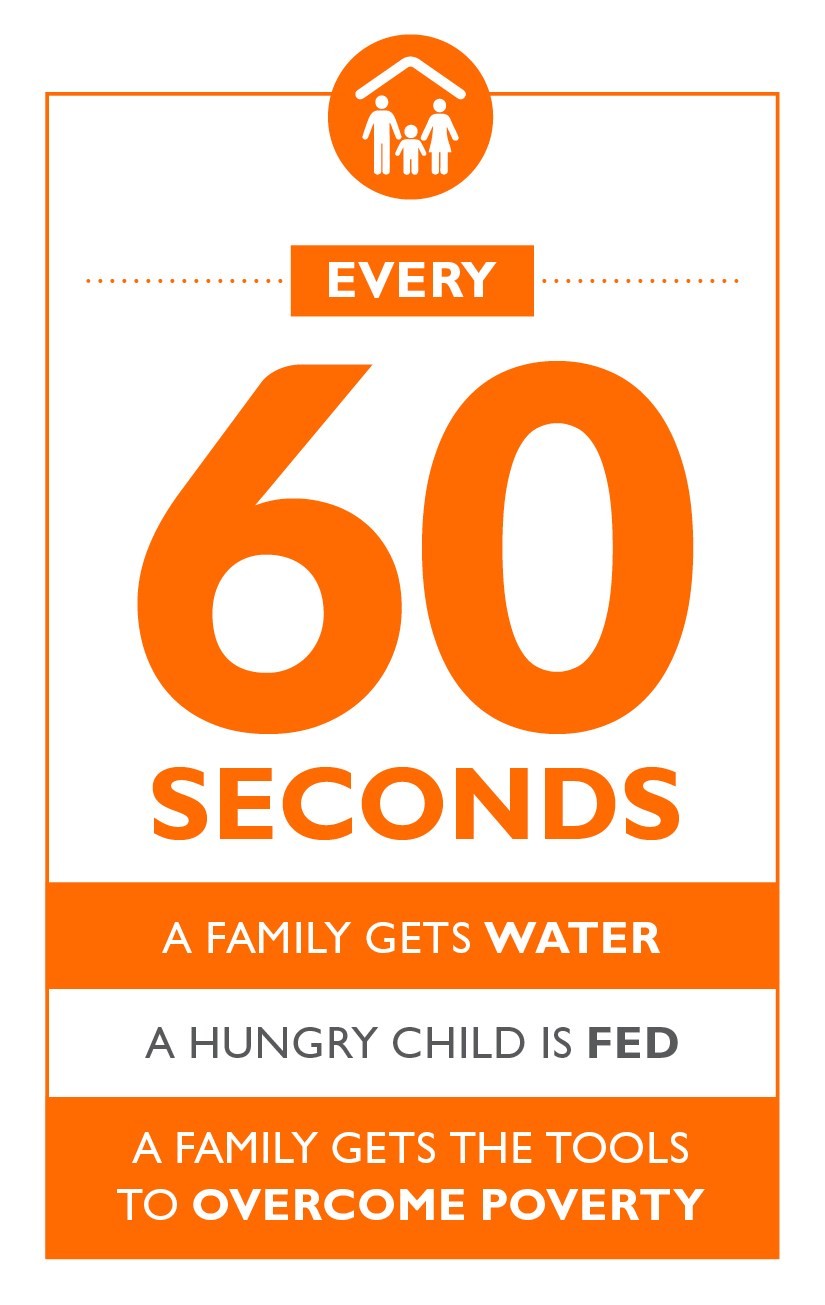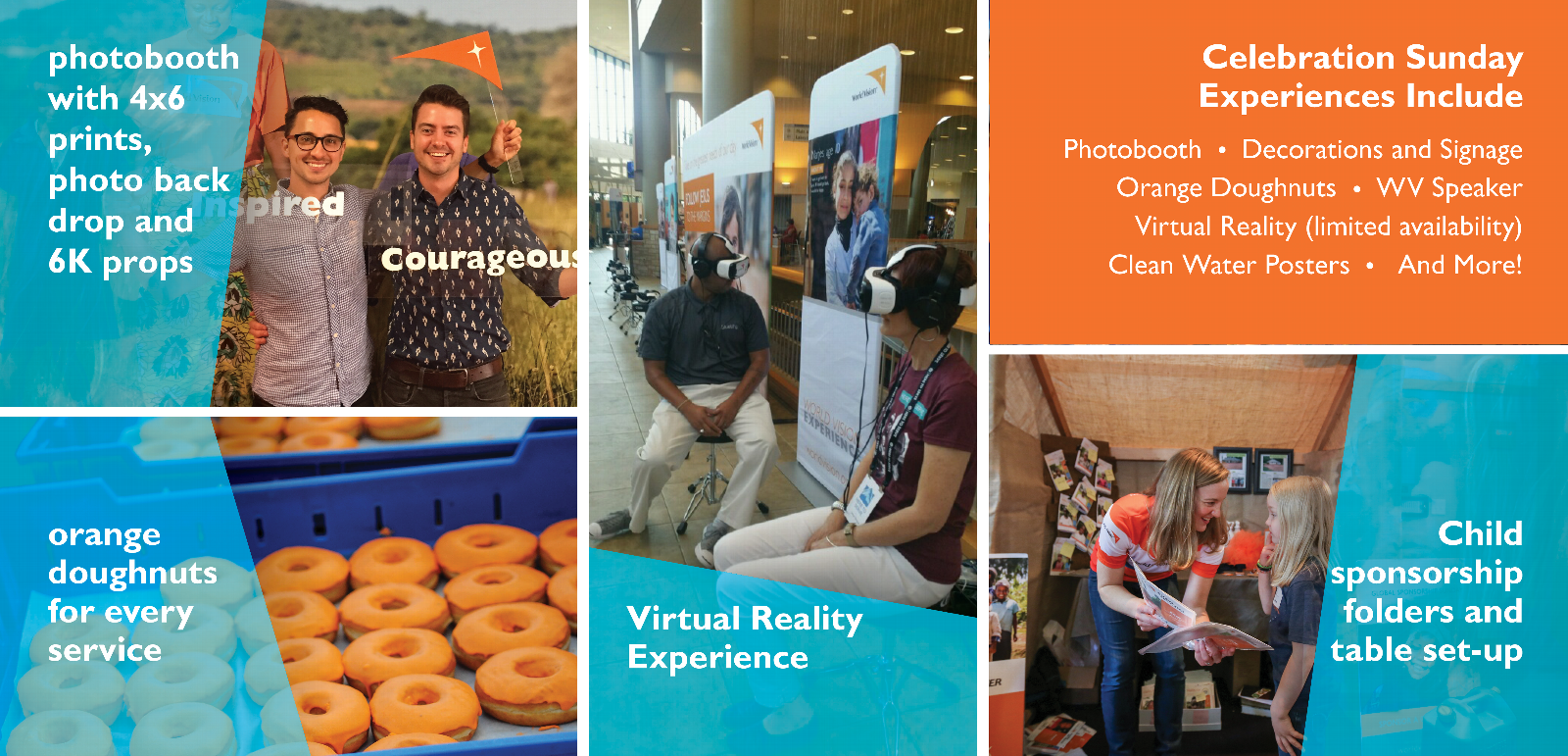Celebration Sunday
Celebration Sunday is on May 5, 2019—the day after the Global 6K for Water.
It’s a day to both INVITE and CELEBRATE: invite all participants (even non-church members) to services on Sunday and celebrate the lives changed through the Global 6K with your congregation and community.
How Does Celebration Sunday Work?
On race day, invite church members and non-members to come and be celebrated at services on Sunday and we'll provide everything you need for a fun service and lobby experience, and you choose how you want to celebrate!
3-Minute Celebration
Thank everyone who walked, ran, or supported the 6K. Have them stand up and applaud their life-changing efforts. Invite everyone to sponsor a child after service to keep the impact going.
- Celebration decorations and signage
- Child sponsorship folders and table set-up
- 24x36 Clean water poster (to be signed by the church and sent by WV to offices in Africa, Haiti, and Honduras)
5-Minute Celebration
Show our 2-minute celebration video. Have everyone who participated stand and be celebrated. Incorporate the theme of caring for the poor in your sermon and invite everyone to sponsor a child after service to keep the impact going.
- Everything from 3-minute experience
- WV speaker to give a celebration announcement of thanks and invitation to sponsor a child
- Orange doughnuts for every service
- Photobooth with prints, photo backdrop, and 6K props
Sermon Celebration
Craft a sermon around grace and humanity in addition to music, prayers, and Scripture readings; show the 6K celebration video, and discuss how sponsorship provides an opportunity for Christians to answer Jesus’ urgent call to serve “the least of these brothers and sisters of mine.”
- Everything from 3 and 5-minute experiences
- Sr. WV speaker to deliver a sermon of gratitude and invitation to sponsor a child
- Virtual reality experience (limited availability)
Experiences are based on availability so register your church TODAY!
CHOOSE YOUR CELEBRATION EXPERIENCE
Why Child Sponsorship?
Clean water is the beginning of everything and by hosting the Global 6K, your church has created the foundation for communities to grow and thrive. Ending the cycle of poverty also involves building trusting relationships, breaking harmful mindsets, and providing resources so people can change their own futures. Our caring sponsors enable us to partner with children and their communities to carry out projects that will have a lasting impact. Through child sponsorship:
 |
 |
 |
Celebration Sunday Video
See the impact we can make when hundreds of churches around the world come together for Celebration Sunday!




